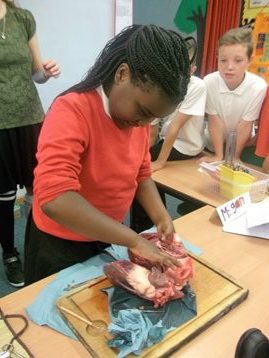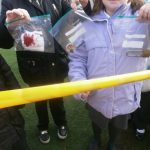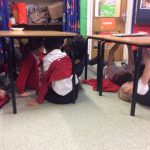
February 3, 2017, by Rupert Knight
Creativity…risky business or essential to learning?
In this post Sally Betteridge explores issues around Creativity and its role in the Primary Curriculum.
A recent article in the TES discussed an anti-testing campaign and a week of Creativity in protest against the SATs and the constant testing regimes in Primary schools.
However, is this enough – a week of creativity – or should education have creativity at the heart of the curriculum?
“Imagination is more important than knowledge” (Einstein, [1931] 2009)
If Einstein’s quote is true, why is creativity so important to learning and if we know this, why is creativity being pushed out of the curriculum?
We live in a world of rapid change, dominated by technological innovations therefore creativity is regarded as essential for economic growth and one of the key 21st Century Skills. For leading companies, basic skills and knowledge in employees are not enough. Ken Robinson, (2009) stated that, “In a knowledge driven economy, human skills and people’s imaginative and innovative powers are key resources.” Robinson has famously shared his vision in a number of TED talks, such as: ‘Do schools kill creativity’, ‘Bring on the learning revolution’ and ‘How to escape education’s death valley’.
What do we mean by Creativity?
For many schools, nurturing creativity is high on their agenda but with the pressures of performativity (Ball, 2003) and the emphasis on standards in English and Maths, creativity can gradually be squeezed out. Schools can sometimes see creativity as being ‘risky business’ that distracts from real learning and creates disorder and behaviour issues. However, creativity should not be viewed as an ‘add on’ to real learning; it should be part of learning in all aspects of the curriculum. Maybe confusion remains over the concept of ‘creativity’ itself and practitioners need to understand creativity and creative practice in order to feel confident that it is important to learning in a system of accountability.
‘Big C’ and ‘little c’
There are two dominant myths that need to be considered and where concepts need to be changed: the first is that creativity is only about the arts, drawing, performing and music for example and the second is that you are just born creative and you are either creative or you’re not – none of which are true! It is understandable that people struggle to understand what creativity actually is as it is particularly difficult to define. This brings us to think about the terms ‘Big C Creativity’ and ‘little c creativity’, the concepts of ‘High creativity’ and ‘ordinary creativity’. Individuals such as Einstein and Beethoven might be considered to be of ‘High Creativity’ whereas Craft et al. (2001) describe ‘little c’ as focussing on the resourcefulness of ordinary people to innovate and take action.
Creativity and Imagination
Creativity is a process, although this process neither may or may nor result in an end product. In this process, in the context of the classroom, we should be providing opportunities for and teaching the skills of possibility thinking. In the classroom, this might be children being posed a problem to solve in which they have to use their imaginations and explore different possibilities. They should have opportunities to be active thinkers and work collaboratively and individually to arrive at possible solutions. In order to find possible solutions, children need knowledge and skills and therefore creativity and knowledge are not opposing forces but work together and should be viewed this way. Creativity involves making connections and using old knowledge to create new. Skills and knowledge need to be applied and used across many subject domains which questions the issue of teaching subjects very separately – something which does not have to happen in a Primary school. When we are making these connections and using old knowledge and experiences to create new or to help us to explore, we are all the time being imaginative, using our imaginations – the ability of our brain to combine elements. Vygotsky (2004) proposed that imagination was the basis for all creative activity and that the whole of the man-made world and human culture is the product of imagination and the creative process of this; indeed, one of the main aims of the Cambridge Primary Review (2009) was “exciting the imagination.”
 A crime scene
A crime scene
So what might Creativity in the classroom look like?
The distinction between creative teaching and teaching for creativity is an important one to understand. Creative practitioners don’t have to be flamboyant, over the top performers, but they do need to create a climate using a range of approaches which enables the creativity of others to flourish.
I have spent lots of time working with schools on this issue. For example:
- In a Year 5 class, they were exploring the word ‘atmosphere’ for writing. The class began by listening to an atmospheric piece of music and drawing and collecting words for this. They then put movement to the words and the music and followed this with group still images. They then explored atmosphere in film and then used this to create group musical compositions. In groups they used photography to try to capture and manipulate a shot to create an effect. The group dialogue in this was essential to the learning. This enabled the class to eventually write their own piece of writing using the techniques explored.
- In a Year 3 class, their theme for the half term was ’Survival’. They began the half term by using the materials they were given in groups to try and build a shelter that they could spend a night in that would withhold different weather conditions. This led them to discuss the importance of team work and they explored different examples of real examples of survival. This launched them in to their theme for the half term and ignited their imagination and fuelled their enthusiasm for their learning.
 Experiencing cave painting
Experiencing cave painting
Some questions to consider:
- How could you create the climate in your classroom to nurture the skills of creativity?
- Are your learners imaginations fuelled so that they are in the right place to learn?
- Is the classroom the best place for the learning to take place or would it be better somewhere else?
- Is group learning better for the task or individual learning?
- How can I facilitate learning so that the pupils arrive at answers themselves?
References
Ball, S. (2003) The teacher’s soul and the terrors of performativity, Journal of Education Policy, 18:2, 215-228.
Craft, A. Jeffrey, B. and Leibling, M. (2001) Creativity in Education. Continuum International Publishing Group Ltd.
Einstein A. (2009) Cosmic Religion: With Other Opinions and Aphorisms. Dover Publications Inc.
Robinson, K. (2009) The Element: How Finding Your Passion Changes Everything. London: Allen Lane.
Vygotsky, L. (2004) Imagination and Creativity in Childhood. Journal of Russian and East European Psychology, vol. 42, no. 1.

You are so interesting! I do not think I have read
through anything like this before. So great to discover somebody
with some genuine thoughts on this subject matter.
Seriously.. thank you for starting this up. This web site
is one thing that is required on the web, someone with some originality!
I am not sure where you’re getting your info, but good topic.
I needs to spend some time learning more or understanding more.
Thanks for wonderful info I was looking for this info
for my mission.
This website was… how do I say it? Relevant!!
Finally I have found something that helped me.
Many thanks!